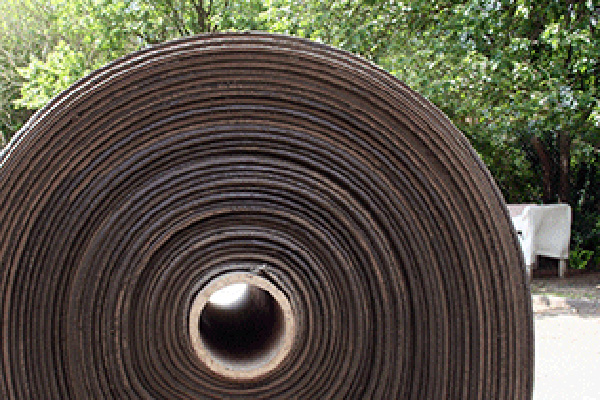
What is Ground Armoring with Concrete Cloth?
Concrete Cloth™ is a flexible concrete impregnated textile fabric that is delivered in dry rolls that resemble carpeting on rolls. Once the Concrete Cloth™ is placed onto the desired project area and secured it is easily hydrated whereupon it hardens within 48 hours into as much as a 6,000 p.s.i. concrete shell.
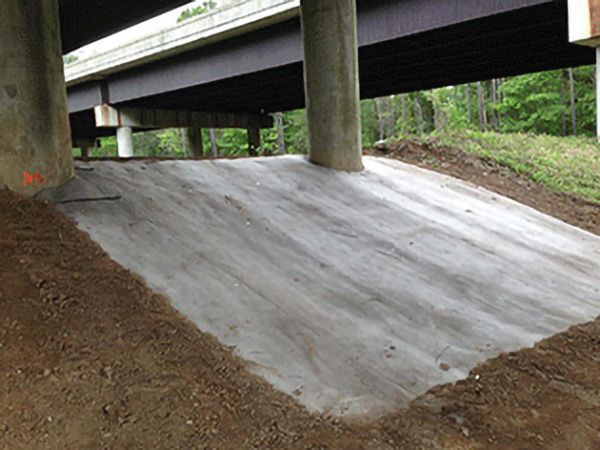
What Is GCCM?
Concrete Cloth™ geosynthetic cementitious composite mats (GCCM) are a groundbreaking material technology that makes it possible to use concrete on slopes, in water, and in other hard-to-reach locations, without forms or mixing and minimal equipment requirements. An engineered concrete in roll form, Concrete Cloth™ GCCM is fabricated with a three-dimensional structure that reinforces the concrete, providing strength and durability. Concrete Cloth GCCM can be quickly cut and secured in place, making it ideal for reinforcing or rehabilitating a culvert or drainage ditch, abutment, berm or other structure. Once hydrated, the cloth cures quickly to form a rigid, durable hh manipulated to fit the contours of irregular installations. Concrete Cloth material’s innovative structure and performance helps extend the ability of cities and transportation departments to economically and effectively repair infrastructure. Compared to traditional concrete repair and construction methods, Concrete Cloth cementitious composite mats dramatically reduce the need for heavy machinery and consequently lessens traffic disruption in busy areas. Less material and simple installation means accelerated project completion and reduced costs, easing the strain on limited infrastructure budgets.
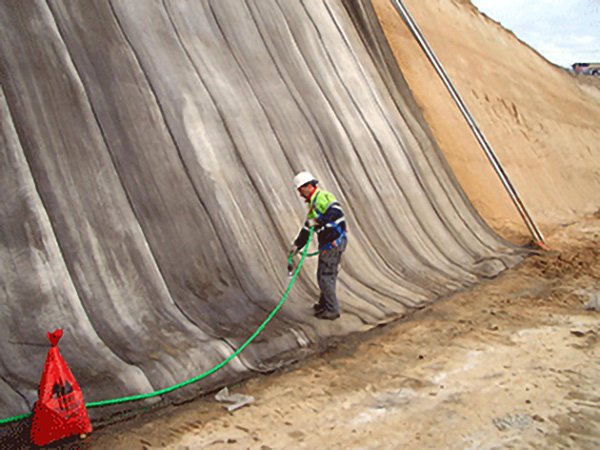
What Are Some Applications for Concrete Cloth?
-
Anywhere that a hard shell would benefit the stability of a slope or slope edge (Erosive areas above creeks and waterways, severely riled slope faces, areas where water influences could cause catastrophic washout in storm type events).
-
Anywhere that an impermeable covering is desired to prevent water or fluid from entering the soil beneath the Cloth. (Earthen ditches and swales, water or slurry containment ponds or areas, sediment and refuse containment basins).
-
Anywhere that containment is necessary to prevent intermingling of fluid types for short or long term issues (Areas where highly acidic runoff must be contained like mine tailings pile runoff or at certain landfills).
-
Anywhere that installed hardscape needs reinforcing or upgrading (Older Steel Culverts whose floors have rotted, flashing to foundations or hard fixturing, badly eroded outlet areas below waterways).
-
Anywhere that strong reinforcement is needed at minimal cost (gabion reinforcement, converting a temporary sandbag wall to a permanent retaining structure by draping Concrete Cloth).
-
Anywhere that weed abatement needs to be permanent (Parks, trail edges, fencelines, guardrail areas, building perimeters).
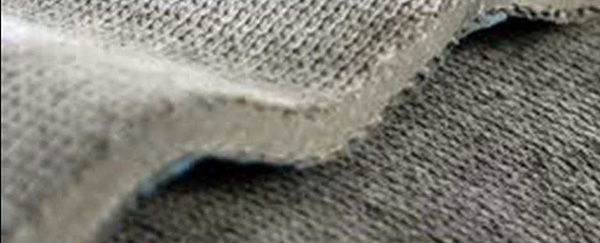
How Is Concrete Cloth Manufactured?
Concrete Cloth™ is manufactured using extremely specialized machinery to fully impregnate the 3-dimensional fiber textile matrix, which is created on top of a PVC coated fiber matting. After the desired material thickness has been achieved, (5mm, 8mm or 13mm) then a finely stitched polyester fiber surface matting is attached over the top of this 3-dimensional textile matrix. The completed Concrete Cloth is then placed on specially reinforced corrugated rolls and readied for shipping inside extremely thick plastic shipping/storage bags.
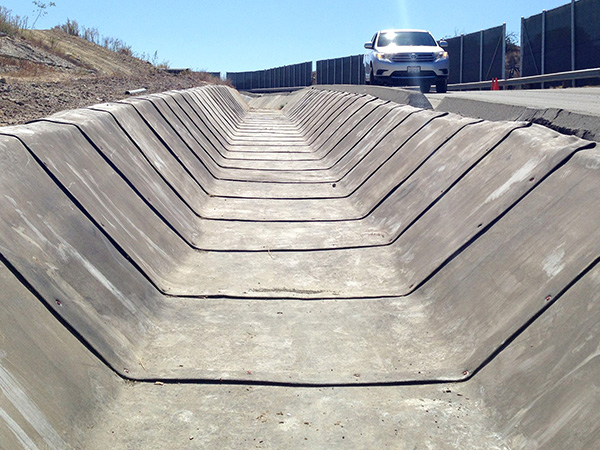
How Should Concrete Cloth be stored?
It is most important that Concrete Cloth be kept in a dry area and away from direct sunlight (which can dry out the plastic shipping bags making them brittle and susceptible to cracking). Storage in this manner should allow Concrete Cloth an approximate 2-year stored shelf life. Significant degradation may occur after that time.
What type of fluids are necessary to hydrate the installed Concrete Cloth?
Any available water is suitable to fully hydrate these textiles. Concrete Cloth will fully hydrate with salt water, highly acidic water sources, and in completely submerged fluid conditions. It takes about 1.5 gallons of saturated fluid per square foot of Concrete Cloth to achieve full hydration. Concrete Cloth begins to “set up” or cure within 2 hours of contact with fluid. It will be fully cured and at its final hardness after 48 hours.
What type of fasteners are needed for installing Concrete Cloth?
Landscape nails or staples can be used over bare soils. Self-tapping concrete screws can be used over existing concrete areas. Commercial caulking on seams or overlaps work well.
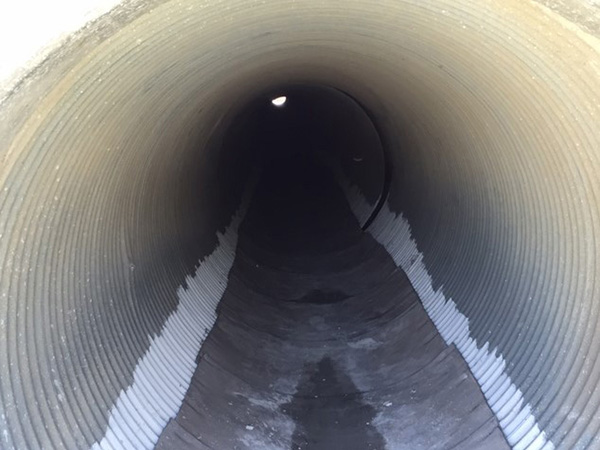
What Is GeoSpray™?
GeoSpray™ geopolymer is a high performance fiber reinforced mortar specifically designed for structural rehabilitation. This high strength, ultra-low porosity material is made from natural mineral polymers and recycled industrial waste streams. GeoSpray is designed for use through multiple application techniques including pouring, placing, troweling, spraying, or centrifugal casting.
GeoSpray can be used for rehabilitation of pipes and structures in Civil Infrastructure, Gas & Oil and Chemical industries. In addition, it is used to repair tunnels, bridges, and roads as well as to rehab buildings and containment areas.
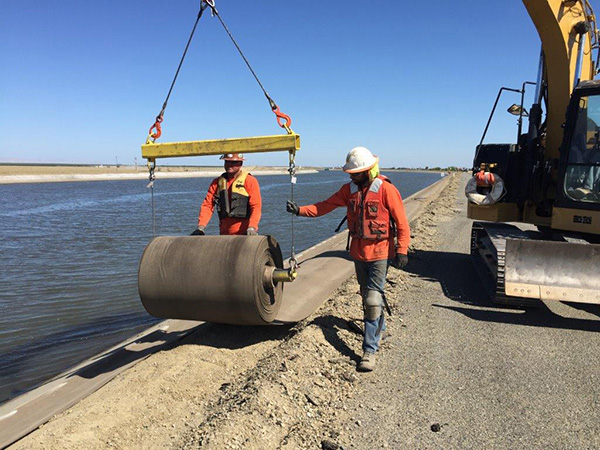
Engineered
-
High flexural and bond strength
-
High early and ultimate strength
-
Adapts to any shape, including bends, curves, and angles
Lower Total Cost
-
Generally lower installation and operating costs compared to alternative methods (SPR/CIPP/Slipline)
-
Less disruption to the public
-
Faster installation
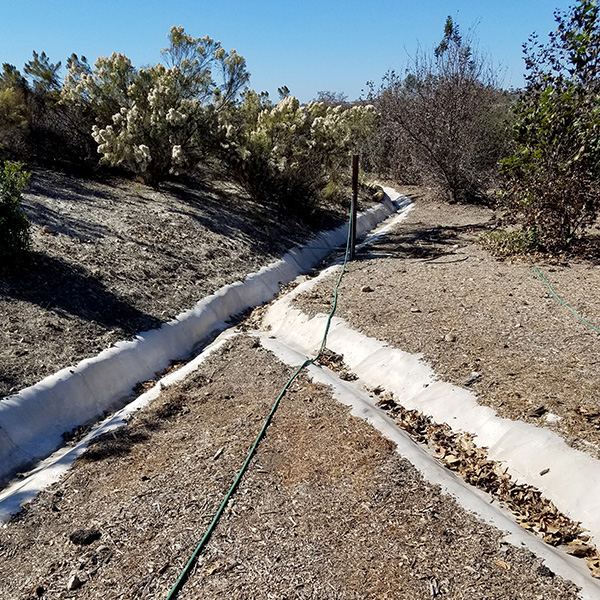
Safe
-
Styrene FREE
-
Contains no leachable toxins
-
Pass – EPA TCLP Toxicity Characteristic Leaching Procedure
Sustainable
-
Lower greenhouse gas emissions
-
50%+ of raw materials come from recycled industrial by-products
-
Locally manufactured
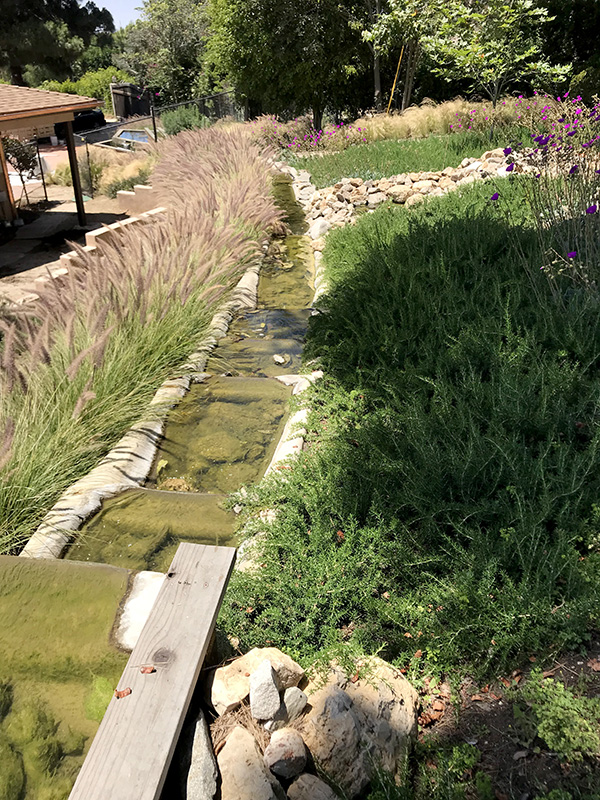
Cases Studies and Completed Projects
-
Application: Arched storm culvert
-
Client: City of Rock Springs
-
Location: Rock Springs, WY
-
Product Used: GeoSpray, 126,000 lb
-
Installation: May, 2014
